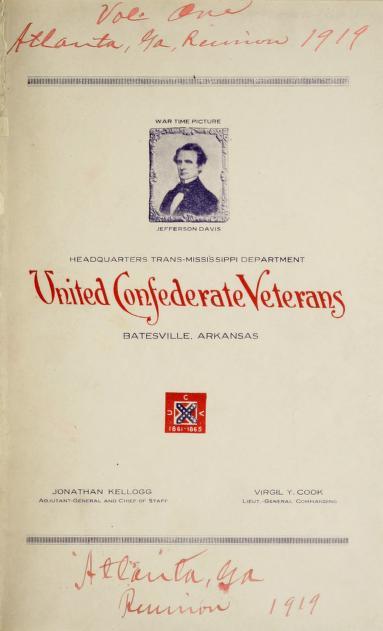Secession and the Early Months of the War
Lincoln's election in 1860 was the catalyst for a chain reaction of secession in Southern states, beginning in South Carolina on December 20, 1860. The following materials discuss the reaction of young people to secession. Each article from the Confederate Veteran emphasizes pride in the South following secession and attempts to justify Southern actions as a defense to aggressive behavior in the North.
Why would secession need to be framed as a result of Northern aggression?
"A Sassy Little Rebel Girl"
Confederate Veteran v.27 (1919)
One of the longer articles in the magazine, Kinnie E. Smith describes her immediate reaction to the war as a student and talks about secession as a result of the "horror at the venom displayed by the North."
"The University of Virginia, October 1860, to April 1861"
Confederate Veteran v.28 (1920)
Calling the election of Lincoln a "direful event," Dr. Henry E. Shepard describes the atmosphere as a student at the University of Virginia following the secession of the state in 1861.
"The Rebel Letter"
Confederate Veteran v.32 (1924)
The magazine published the letters of Julia C. Putnam, a young girl in 1861. In reaction to secession, Putnam justifies the cause biblically and portrays the Northern states as "aggressors."
"A Boy and His Flag"
Confederate Veteran v.36 (1928)
Author Mrs. William Lyne discusses the diaries of Lewis D. Crenshaw Jr. Crenshaw was 15 in 1861 and gave a romanticized account of being "filled with that patriotic enthusiasm" upon seeing the raising of the first Confederate flag over Richmond.
Questions to Consider:
According to these sources, what were Southern attitudes towards secession? Is there a common theme in them? If so, what is it?
These sources were written in the early twentieth century, over fifty years after the Civil War. How would this affect how a historian would evaluate them? Examine how they reflect the time period they were written in?
How do these sources reflect the "Lost Cause" ideology?




